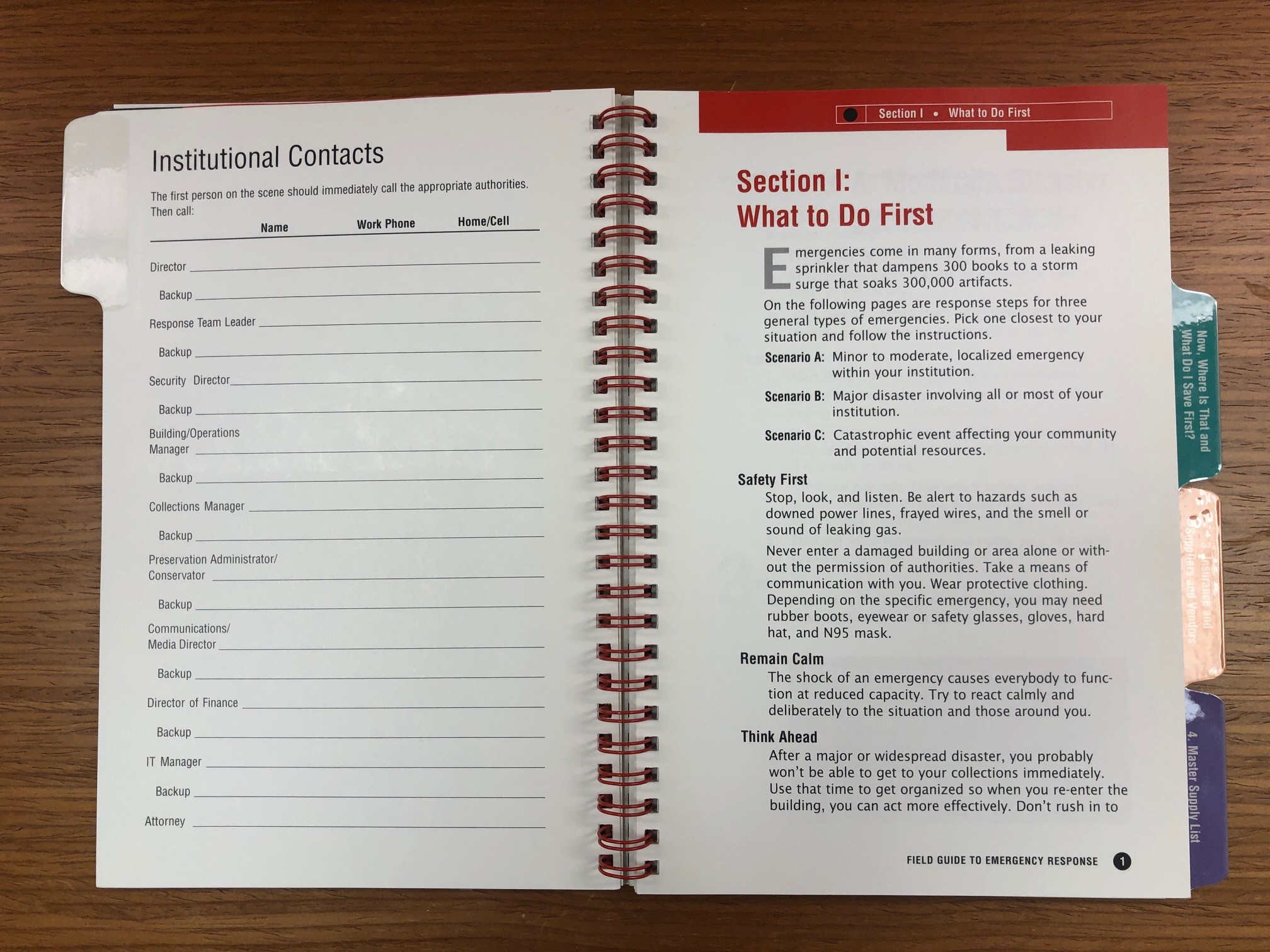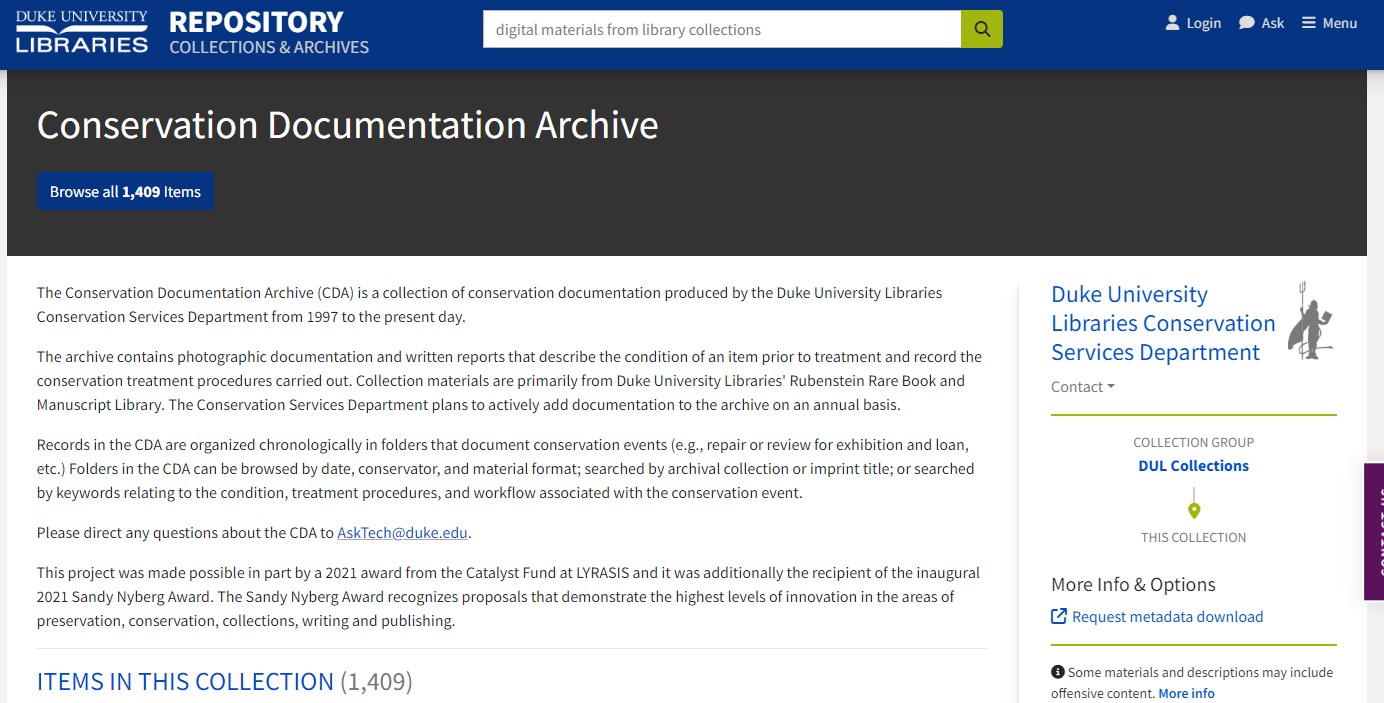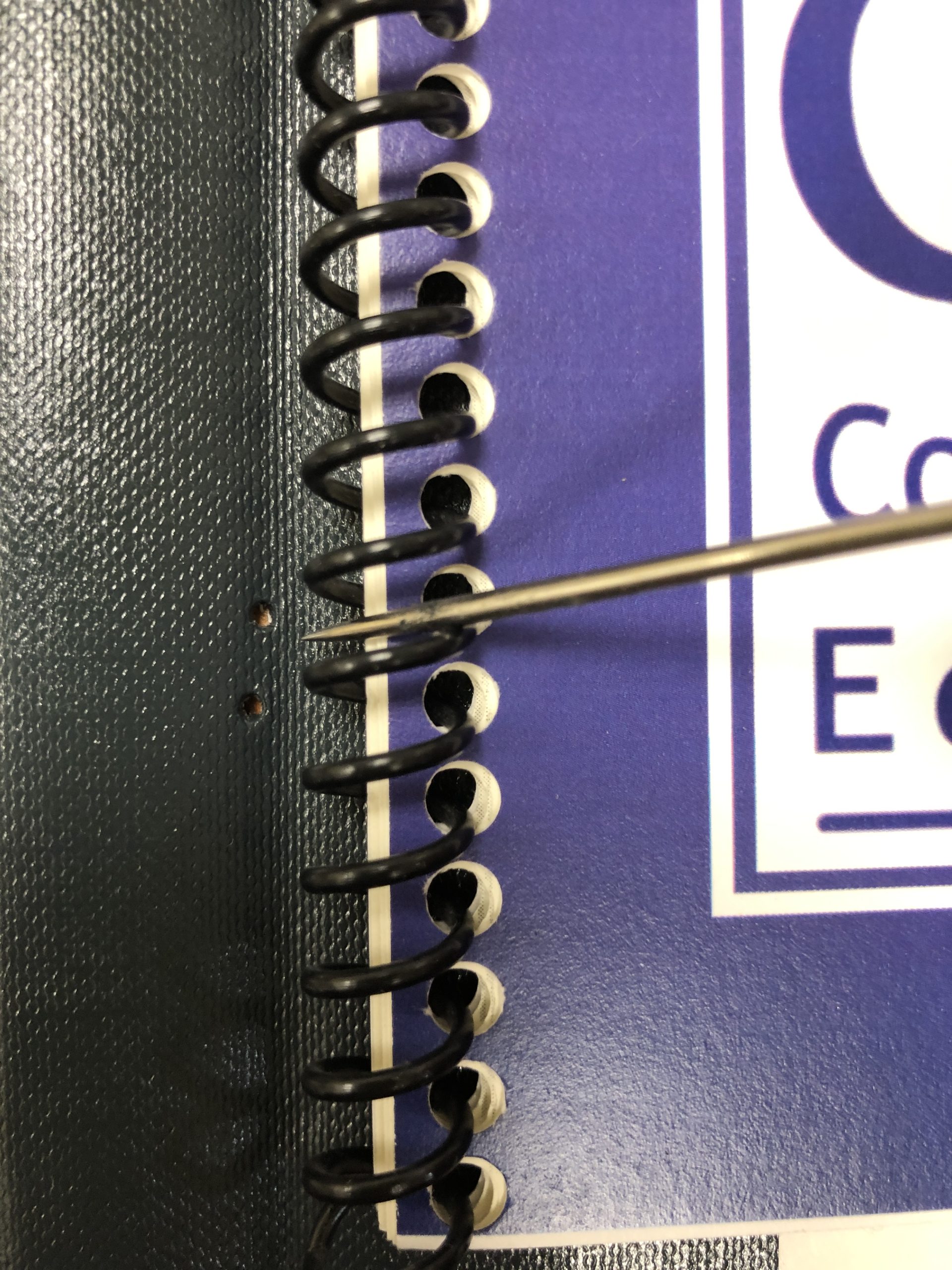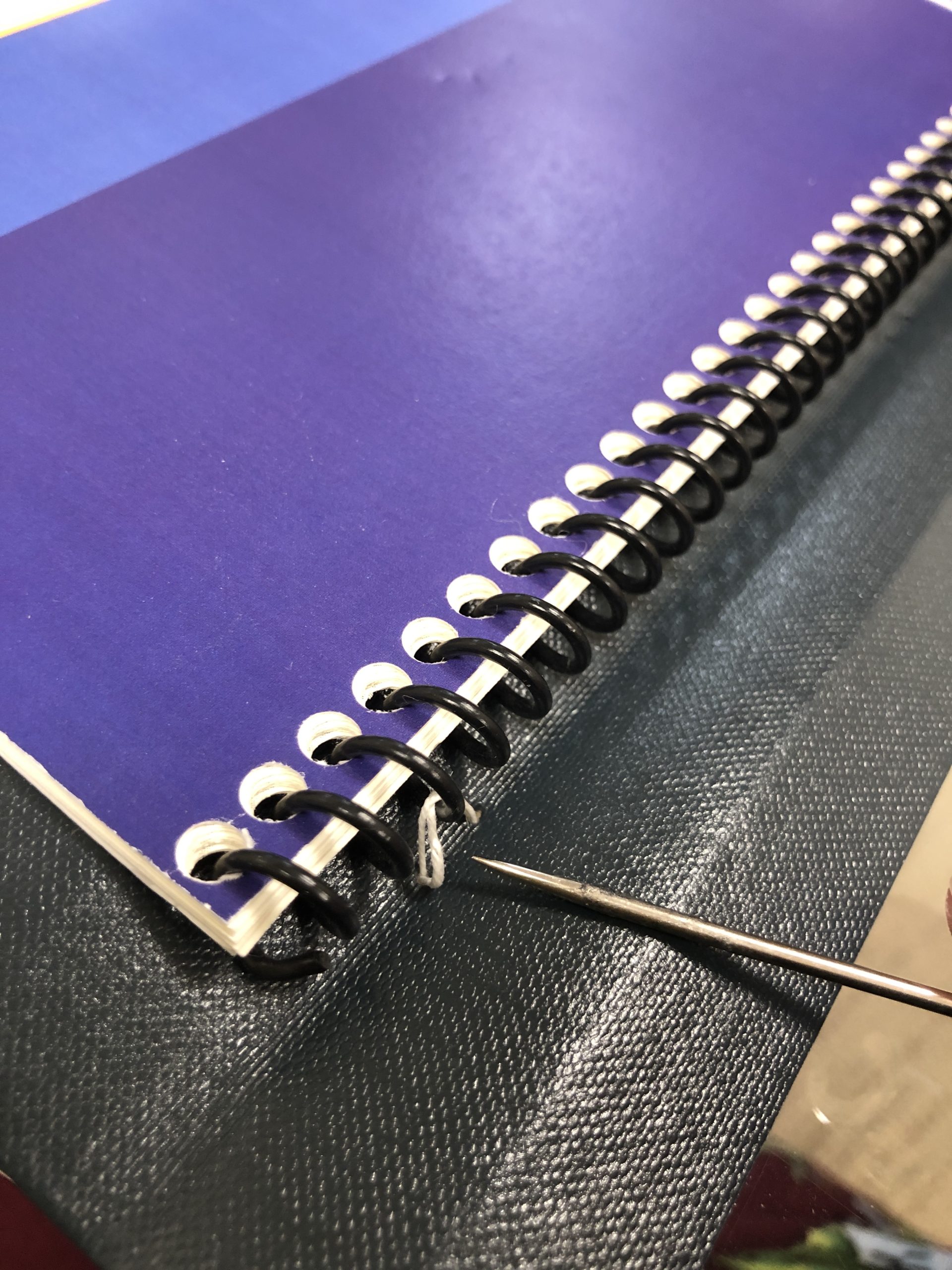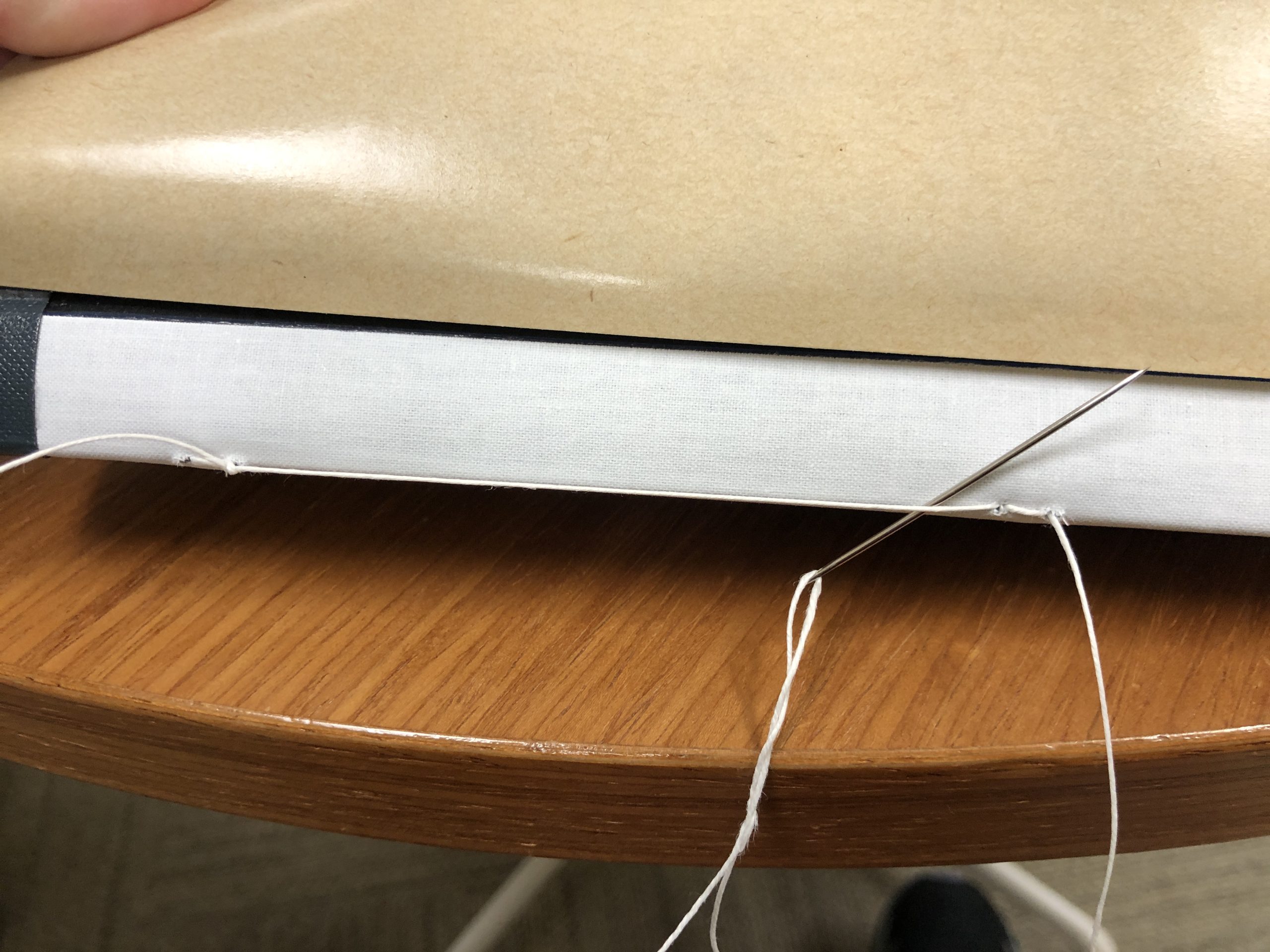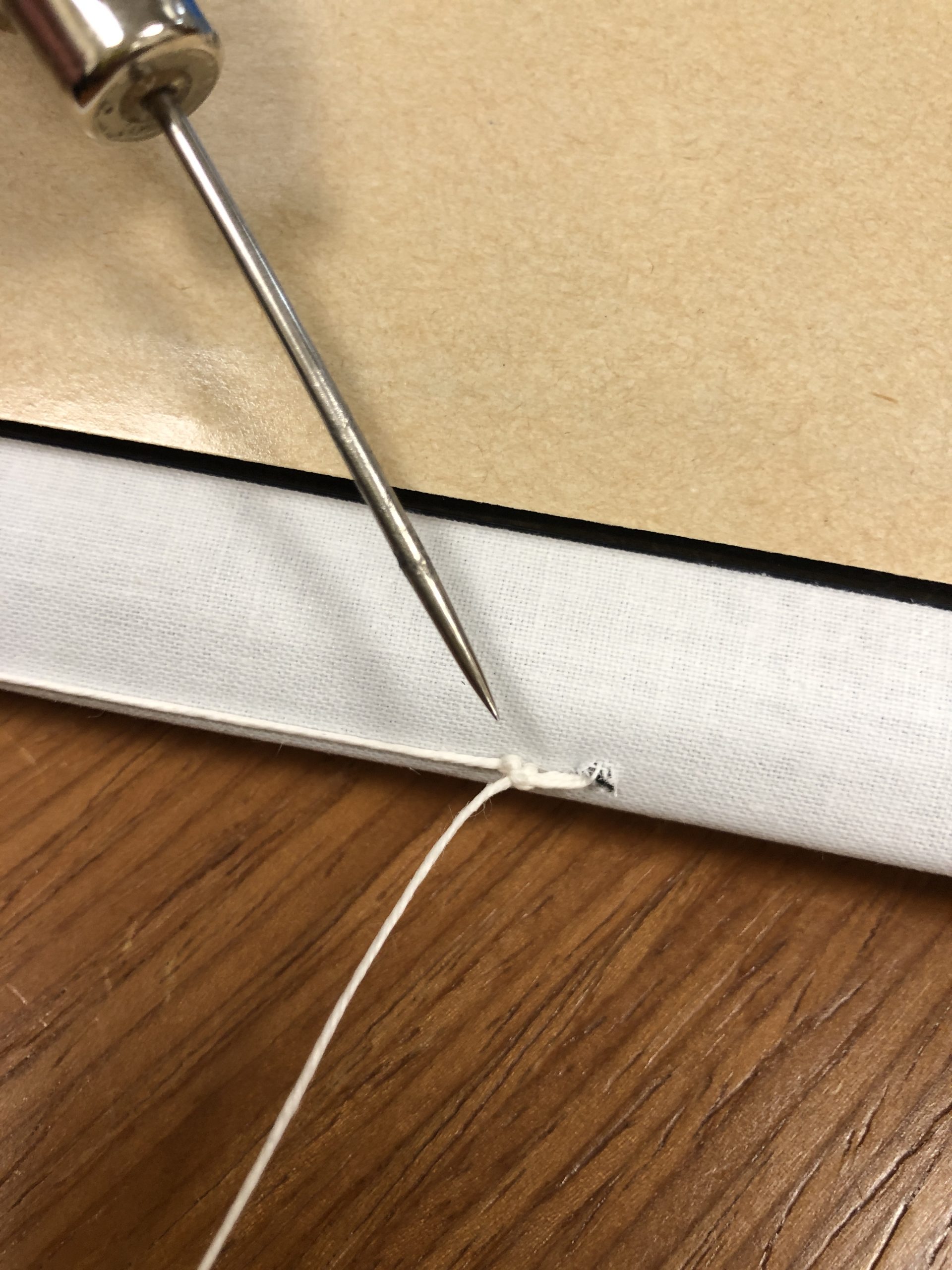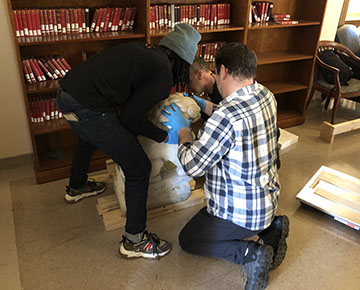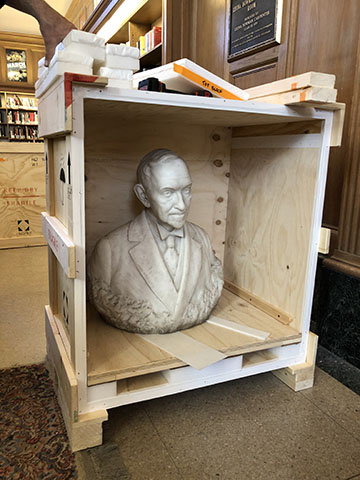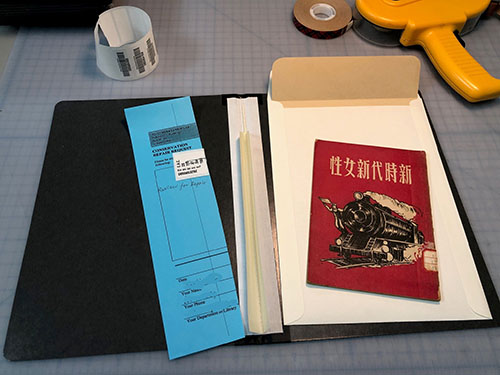Duke University Libraries is seeking applicants for Senior Conservation Technician in the Verne and Tanya Roberts Conservation Lab. Come join our team!
As Senior Conservation Technician you will:
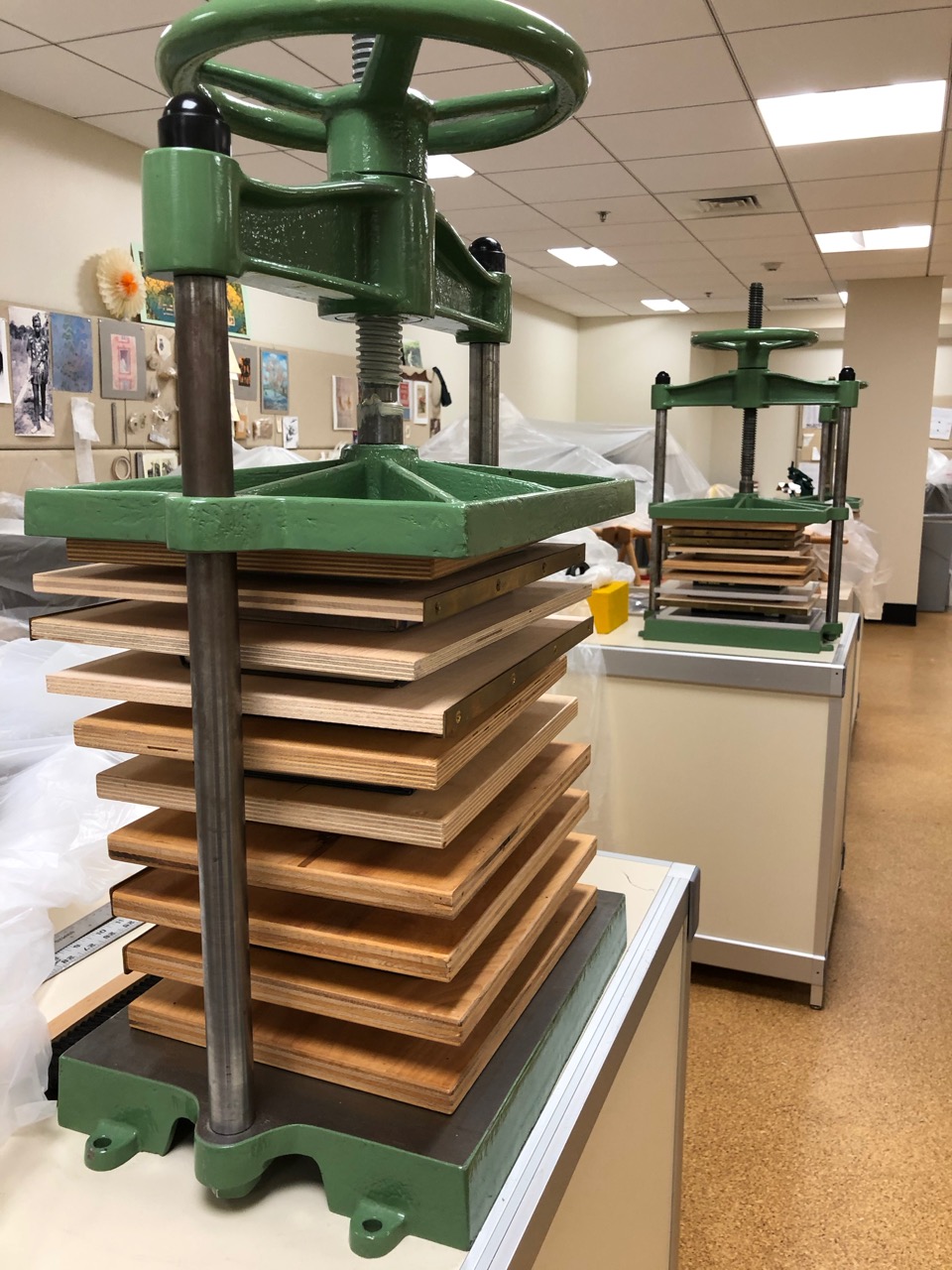
- Carry out basic, intermediate, and advanced repairs primarily on circulating collection materials.
- Construct custom enclosures for library materials from circulating and special collections.
- Prepare items for the shelf including binding pamphlets, inserting loose materials, making pockets, etc.
- Retrieve and triage materials from circulation points across the library system.
- Manage lab spaces and equipment.
- Manage student assistants including assisting in the hiring, interviewing, training, and quality control of their work.
- Contribute to outreach initiatives including writing for our blog.
The job announcement outlines further job responsibilities and the application requirements: https://library.duke.edu/about/jobs/srconservationtechnician
Applicants invited for an interview will be expected to present a portfolio of work.
You will succeed in this role with these skills and abilities:
- Demonstrated knowledge of book repair techniques for 19th and 20th Century library materials, including books bound in cloth, leather, and paper.
- Demonstrated knowledge of the construction of a variety of custom enclosures for library materials.
- Capable of managing multiple projects and priorities simultaneously.
- Detail oriented with good problem-solving skills.
- Ability to work independently and as part of a team.
- Ability to teach basic conservation skills to student assistants with little or no conservation experience.
Salary and Benefits
Salary dependent on qualifications and experience; anticipated salary range $50,000-$60,000. Comprehensive benefits package includes 15 days vacation, 14 holidays, 12 days sick leave; health, dental, disability and life insurance and support for professional development and training.
About us:
The Duke University Libraries are the center of intellectual life at Duke, one of the most highly ranked private universities in the nation. The William R. Perkins Library, Bostock Library, David M. Rubenstein Rare Book & Manuscript Library, and von der Heyden Pavilion comprise the university’s main library complex, which is joined on East Campus by the Lilly and Music Libraries, and by the Pearse Memorial Library at the Duke Marine Lab. Together with the separately administered libraries serving the schools of Business, Divinity, Law, and Medicine, they comprise one of the country’s top 10 private research library systems. Consistently recognized as a great place to work, we strive to provide an inclusive, safe, and welcoming environment with equitable support for all people.
More information about the Duke Libraries and the Verne and Tanya Roberts Conservation Lab can be found here:
Where Curiosity Leads, the Duke University Libraries Strategic Plan, 2024-2029
Diversity, Equity, and Inclusion at Duke University Libraries
Duke Libraries Conservation Services Department
More about Duke and Durham:
Located halfway between the Great Smoky Mountains and the beaches of the Atlantic, Durham is home to hundreds of restaurants, more than 40 annual festivals, Duke and North Carolina Central universities, art and science museums, world-class medical facilities, and a rapidly growing, richly diverse population. One of three cities that make up North Carolina’s Research Triangle, Durham is known as a vibrant hub for innovation and technology, as well as an incubator of many successful start-ups. It is consistently ranked among the best places to live, do business, and retire. Learn more at https://durham.duke.edu/.
Duke University consistently ranks among the best employers in the country. Duke offers a comprehensive benefit packages which includes both traditional benefits such as health insurance, leave time and retirement, as well as wide ranging work/life and cultural benefits. Details can be found at: http://www.hr.duke.edu/benefits/duke_benefits.html .
To learn more or to apply, please go to:
https://library.duke.edu/about/jobs/srconservationtechnician



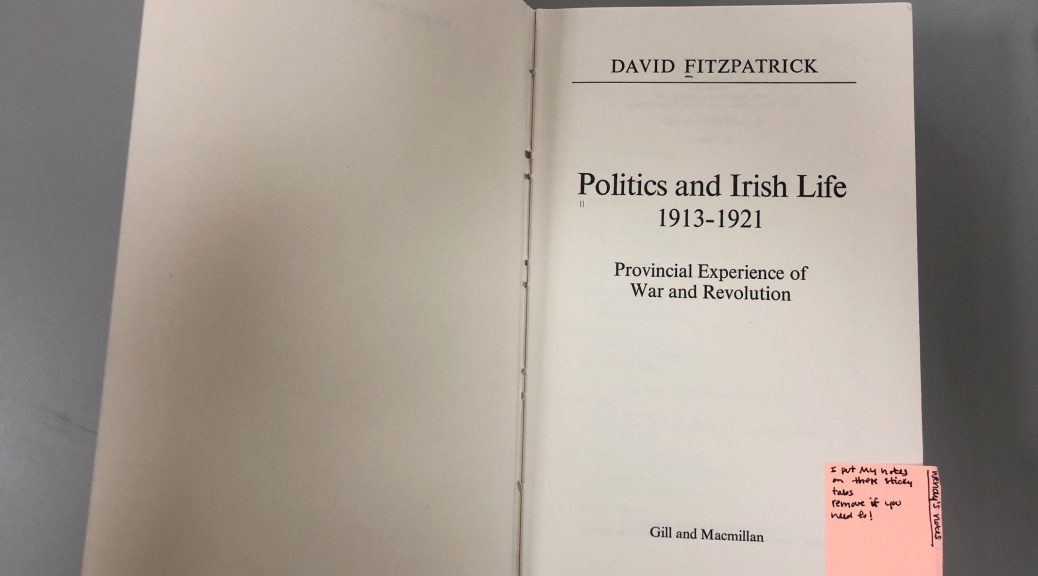
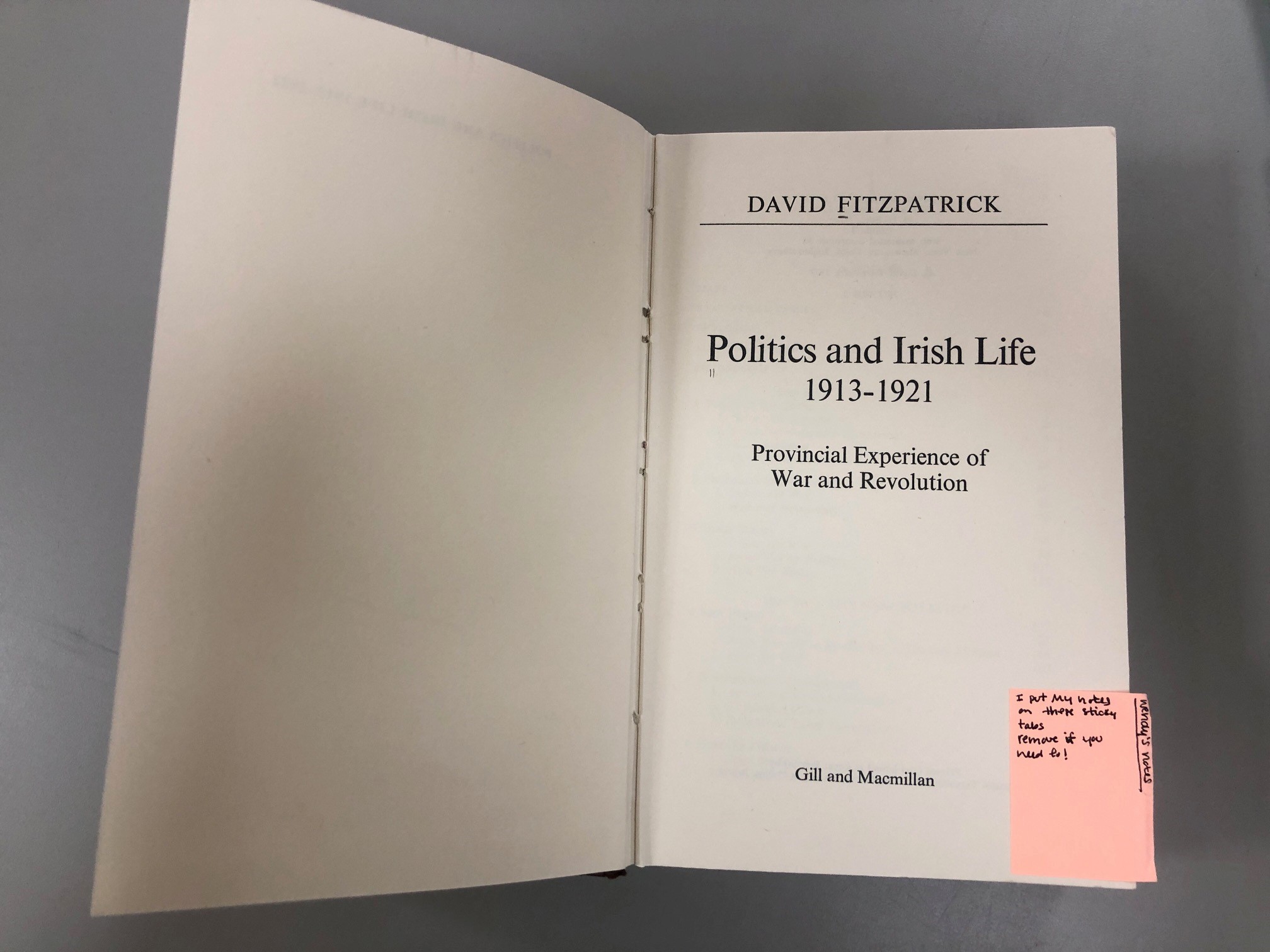
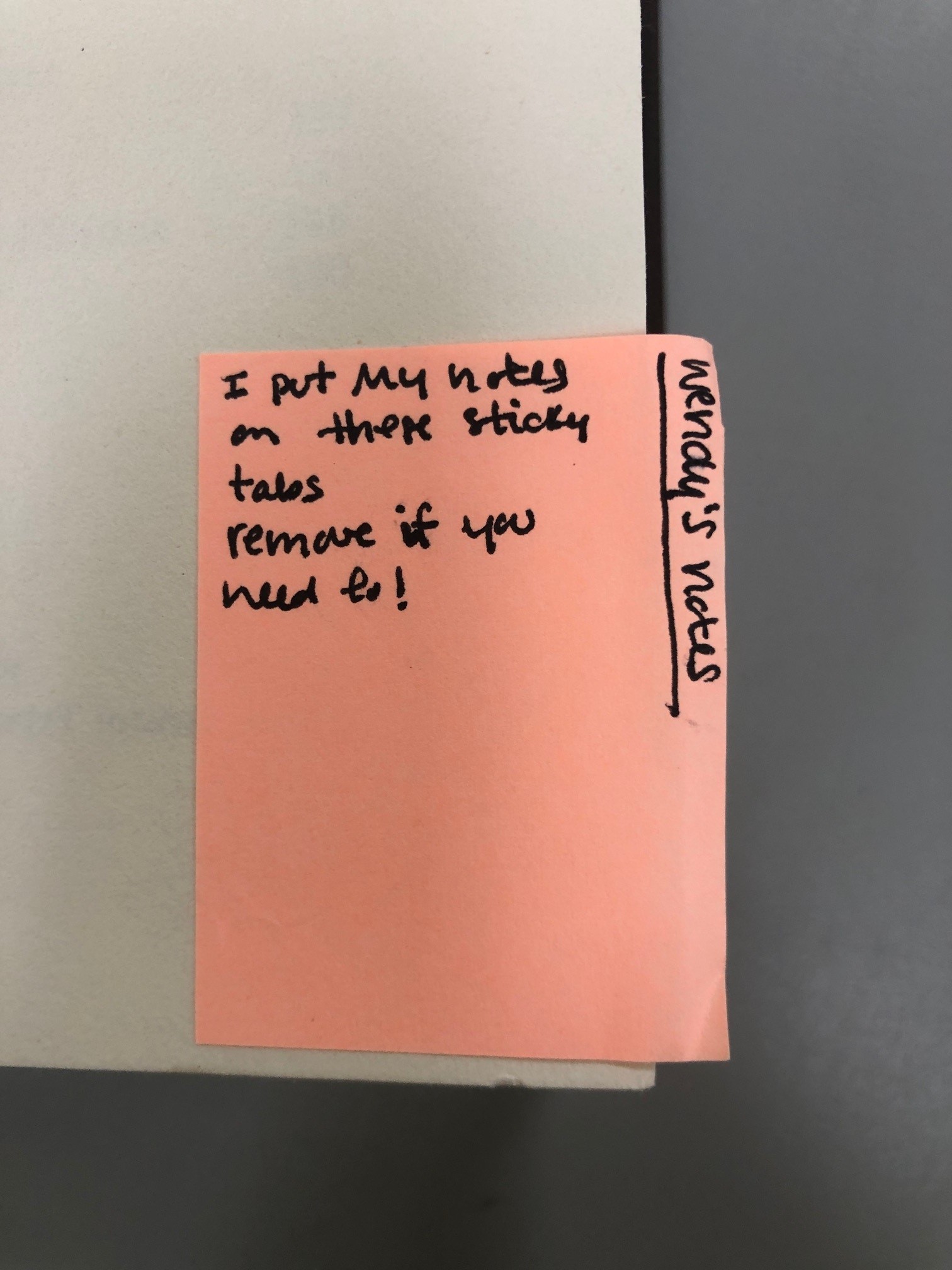
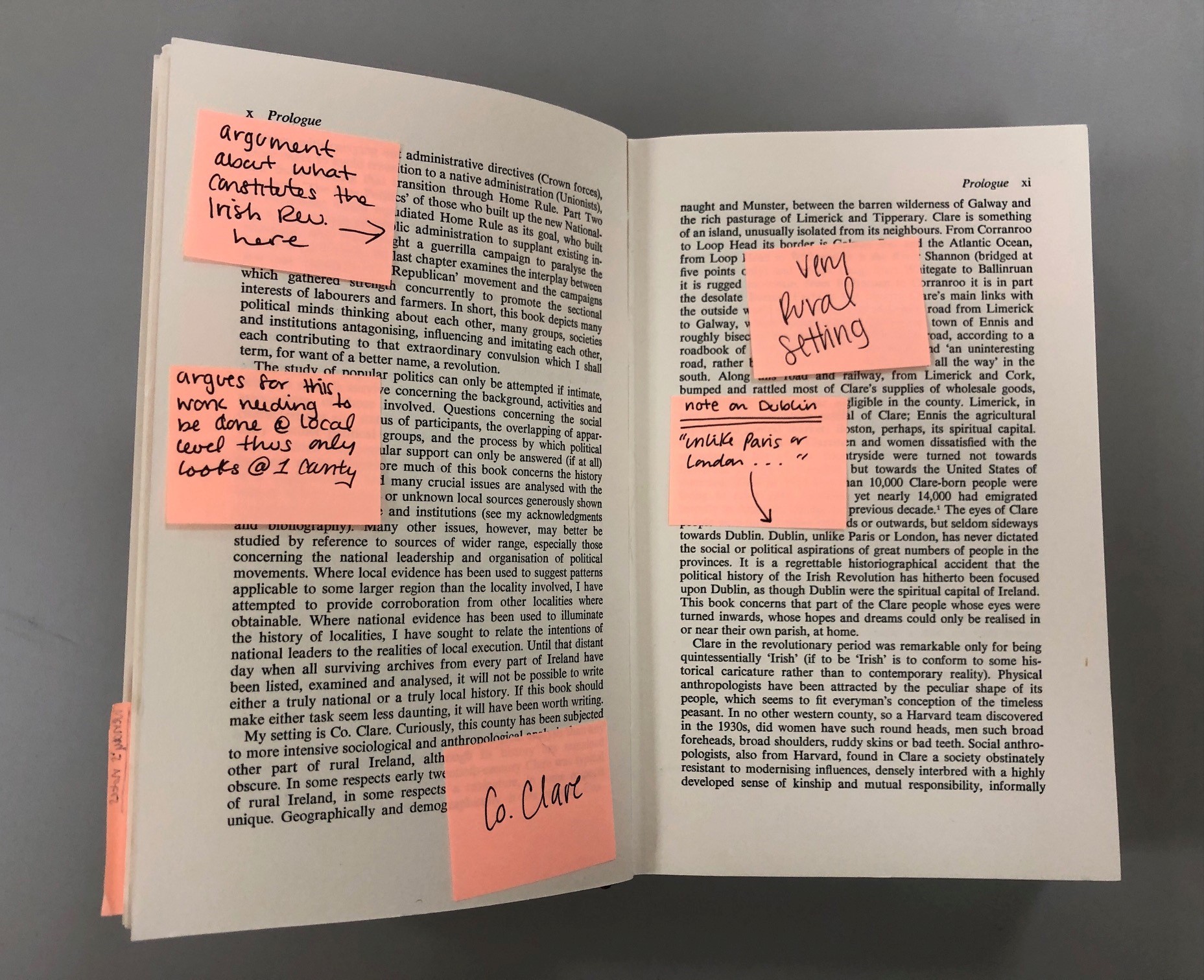
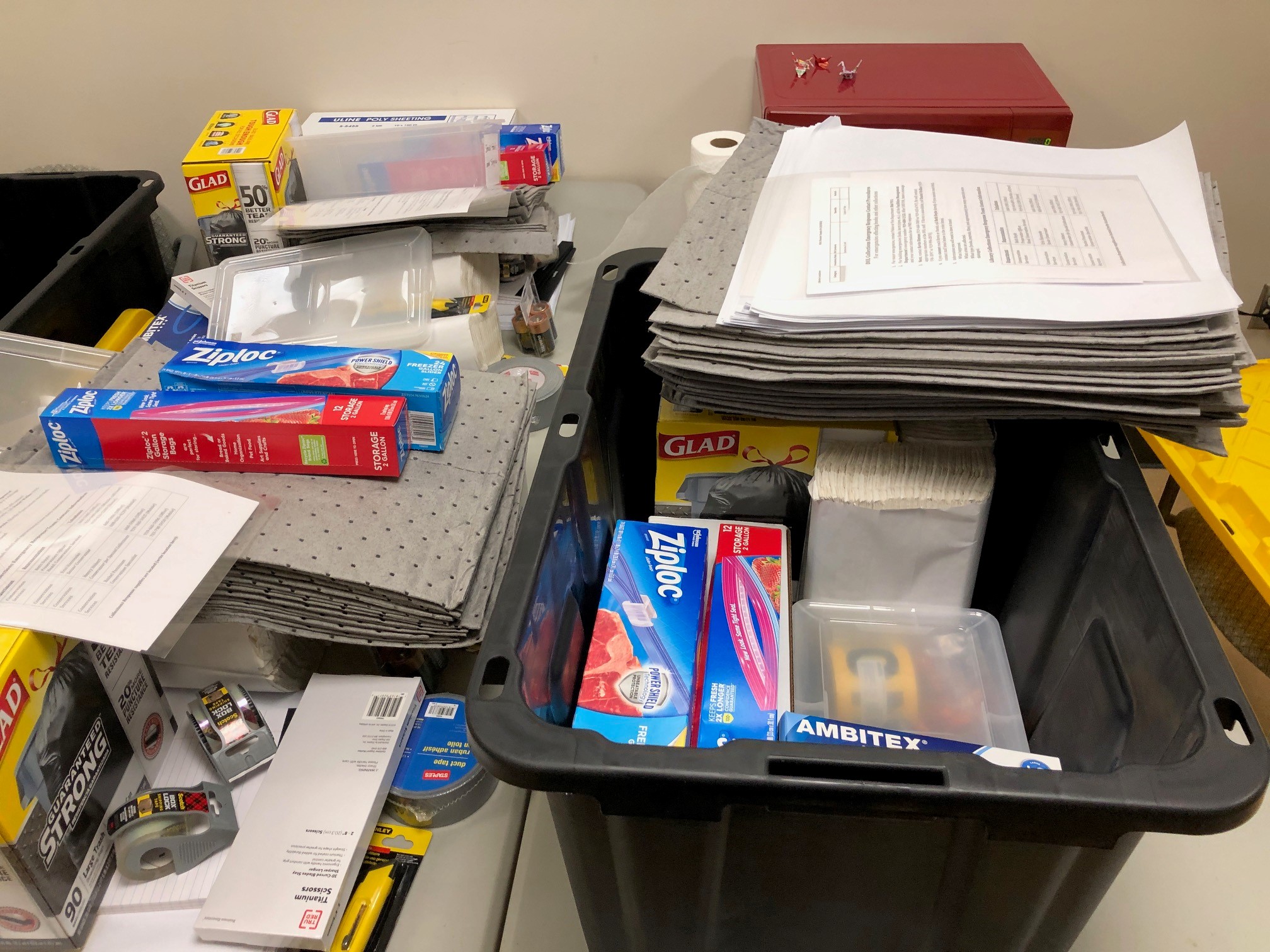


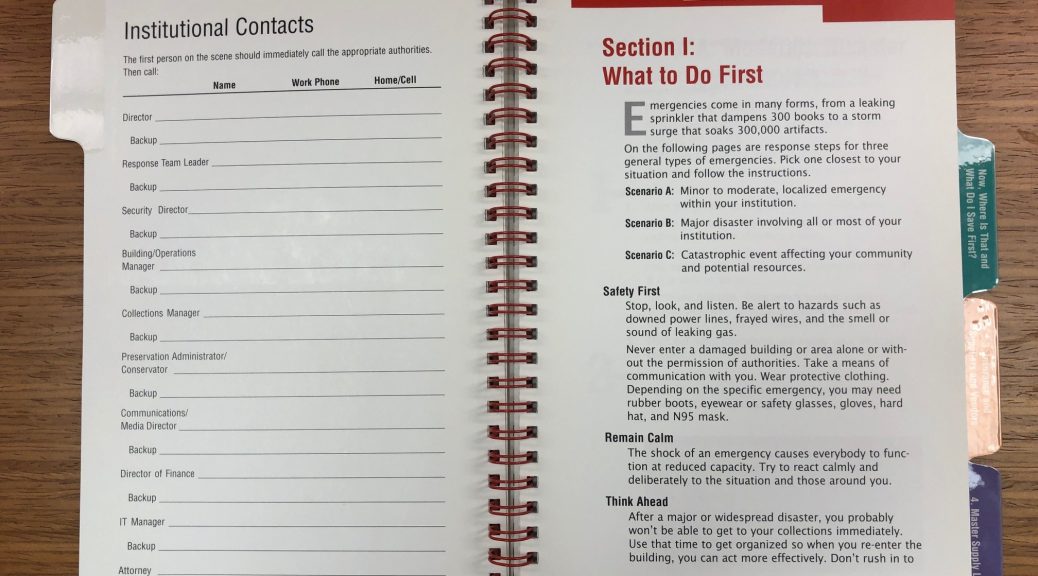
 It’s May Day, the
It’s May Day, the 